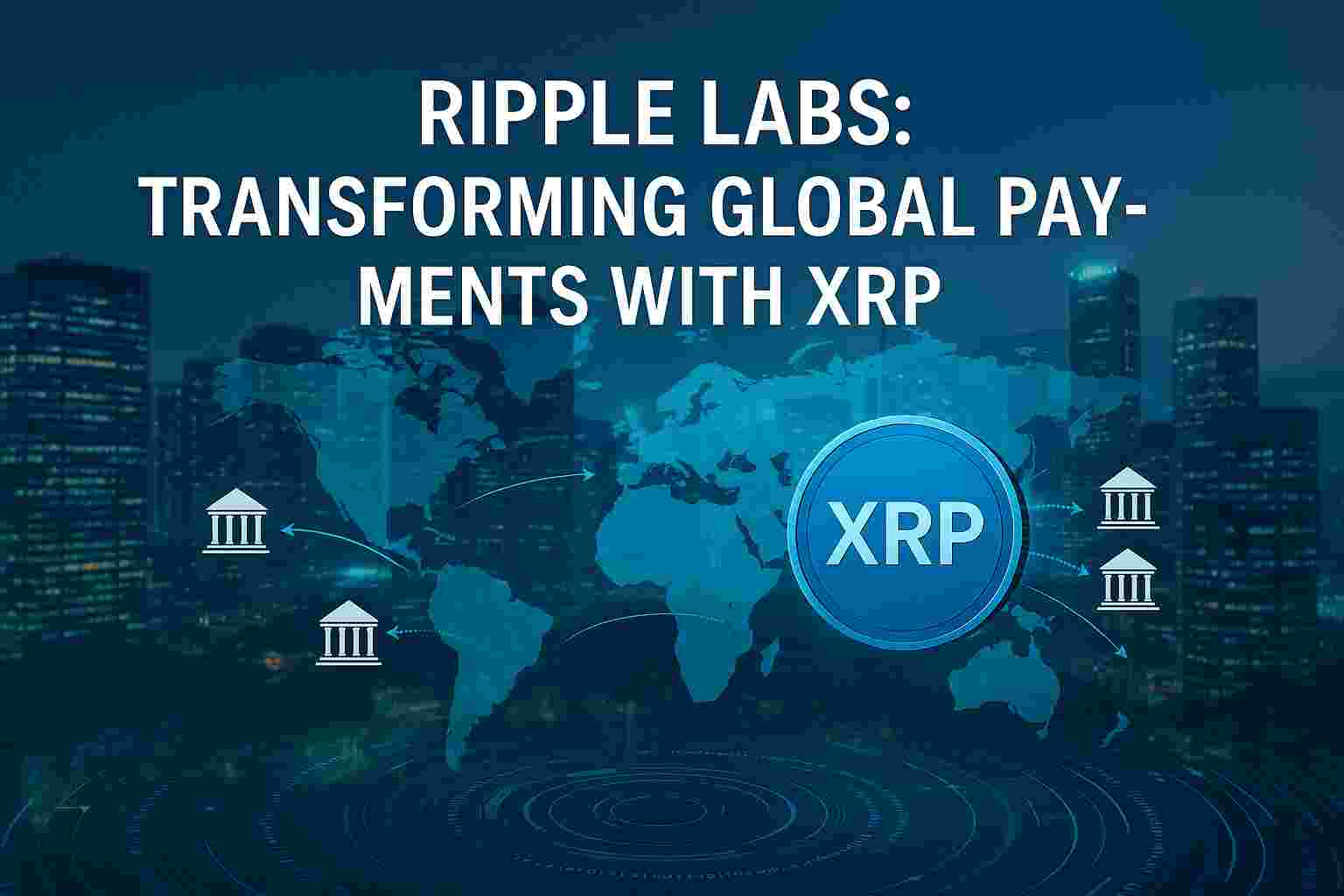In today’s rapidly advancing digital economy, Ripple Labs has emerged as a pioneering force in blockchain-based financial services. The company stands out for its mission to revolutionize how money moves across the globe by replacing outdated systems with decentralized, real-time technology.
At the core of Ripple’s innovation is its native token, XRP, which enables scalable and low-cost remittance solutions. Ripple’s technology offers banks, financial institutions, and payment providers a more efficient alternative to traditional cross-border transfer systems, which are often slow and expensive.
As the adoption of blockchain accelerates worldwide, Ripple Labs continues to gain traction. Its cutting-edge payment infrastructure is not only reshaping the speed and cost of global transactions but is also helping define the future of digital finance.
How Ripple Labs Uses XRP for Fast, Low-Cost Transfers
Ripple Labs develops its solutions around the XRP Ledger, an open-source blockchain that enables fast and energy-efficient transactions. XRP functions as a bridge currency, reducing the need for pre-funded accounts in global transfers. This innovation significantly cuts down transaction costs and settlement times—from days to just seconds.
In contrast to legacy systems like SWIFT, which rely on intermediaries and carry high fees, Ripple’s technology facilitates instant settlements with end-to-end transparency. This is particularly beneficial in remittance corridors between developing economies, where efficiency and affordability are critical.
Ripple’s On-Demand Liquidity (ODL) and Cross-Border Impact
One of Ripple Labs’ flagship products is On-Demand Liquidity (ODL), which allows financial institutions to source liquidity instantly using XRP. By eliminating the need to hold foreign currencies in nostro/vostro accounts, ODL reduces capital requirements while enhancing speed and flexibility.
Many regions, including Southeast Asia and Latin America, have adopted ODL to strengthen their cross-border infrastructure. This growing impact highlights Ripple’s rising importance in the evolving landscape of blockchain-powered global finance.
To explore how similar crypto technologies are being adopted globally, check out our article on XRP ETF Launch in the US, where institutional interest in Ripple’s ecosystem is gaining traction.
Ripple Labs vs. Traditional Payment Systems
Compared to traditional financial networks, Ripple Labs stands out for its:
- Near-instant settlement speeds (3–5 seconds)
- Ultra-low fees (fractions of a cent per transaction)
- Scalability (1,500+ transactions per second)
- Energy-efficient operations
- Blockchain transparency and security
These features make Ripple an ideal partner for fintech companies, remittance service providers, and even central banks exploring CBDCs. While older systems are burdened with high operational costs and delayed processing, Ripple offers a streamlined, digital-first alternative.
Ripple Labs and Global Banking Partnerships
Ripple Labs has built a vast network of institutional partners, including banks, credit unions, and payment gateways in over 55 countries. These collaborations validate the firm’s commitment to regulatory compliance and scalability. Ripple’s partnerships include both major players in finance and rising digital-first institutions.
This strategic alignment is similar to how Grayscale Investments has brought legitimacy to digital assets in the eyes of traditional investors. Ripple is achieving a comparable feat in the payments sector.
Ripple Labs in Legal Landscape: A Turning Point
For years, Ripple Labs was involved in a legal battle with the U.S. Securities and Exchange Commission (SEC) over whether XRP should be classified as a security. However, recent court decisions have clarified that XRP is not a security when traded on public exchanges. This legal clarity has further strengthened Ripple’s position in the market and re-energized investor confidence.
In fact, this development is influencing broader crypto regulatory discussions—similar to trends covered in our article on SEC crypto regulation.
Ripple Labs’ Role in Financial Inclusion
Ripple’s commitment to lowering transaction costs is also a step toward financial inclusion. Billions of unbanked or underbanked individuals globally rely on expensive remittance services. Ripple’s technology reduces fees and increases access to essential financial services, creating new economic opportunities in underserved regions.
If you’re exploring crypto projects with real-world impact, don’t miss our coverage on RWA tokenization, where digital assets are transforming tangible economies.
XRP as a Strategic Digital Asset
XRP is more than a utility token—it is an integral part of Ripple’s payment infrastructure. It enables real-time liquidity sourcing, bridges disparate fiat currencies, and helps reduce friction in the global payments landscape.
As Ripple continues to expand its ecosystem, XRP’s value proposition is becoming clearer to both institutional and retail investors. For those interested in long-term crypto investment strategies, visit our guide to Ethereum investment strategies to build a diversified portfolio that includes infrastructure-backed tokens like XRP.
What’s Next for Ripple Labs in 2025 and Beyond?
Looking ahead, Ripple Labs is expected to:
- Expand ODL corridors across Africa and the Middle East
- Integrate with central bank digital currency (CBDC) platforms
- Enhance scalability through XRPL upgrades
- Explore tokenized real-world asset initiatives
In parallel, Ripple’s increasing relevance among institutions may spark the development of new financial products—potentially including Ripple-backed ETFs or lending platforms.
Conclusion: Ripple Labs Is Paving the Way for Faster, Fairer Finance
Ripple Labs is not merely a blockchain company—it’s a transformative force modernizing global finance. By building efficient, low-cost payment solutions using XRP, Ripple has become a catalyst for financial innovation and inclusion.
As the demand for real-time cross-border payments intensifies, Ripple Labs is poised to lead the next wave of disruption in the global financial system.
FAQs
Q1. What is Ripple Labs best known for?
Ripple Labs is known for building fast, low-cost remittance solutions using the XRP token and the XRP Ledger.
Q2. How does XRP reduce remittance costs?
XRP acts as a bridge currency, eliminating the need for pre-funded accounts and enabling near-instant, affordable transactions.
Q3. Is XRP still involved in legal disputes?
A U.S. court has ruled that XRP is not a security when sold on public exchanges, providing legal clarity for Ripple Labs.
Q4. What is Ripple’s On-Demand Liquidity (ODL)?
ODL allows institutions to source liquidity in real-time using XRP, reducing costs and improving transaction speed.
